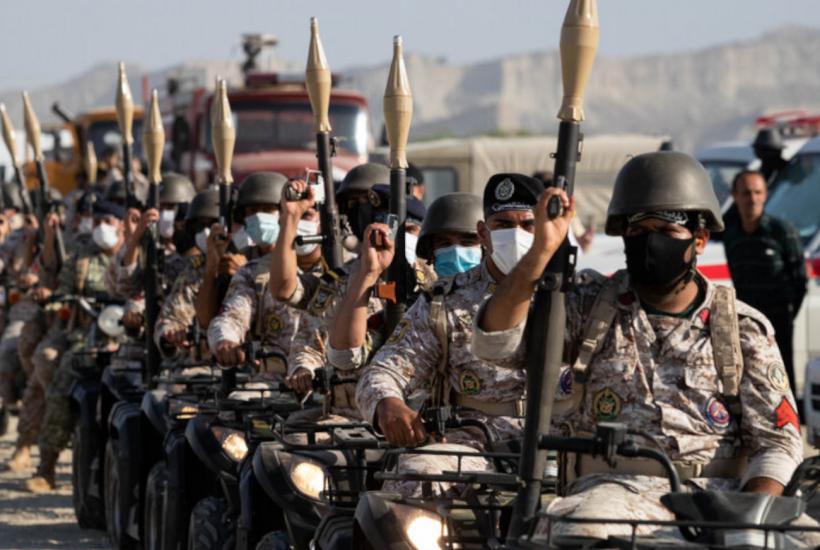Iran calls talks with US constructive and promising: What’s behind such optimism?
Iran has described the recent round of indirect talks with the United States as “constructive and promising.” Middle East expert Boris Dolgov explains the context behind these positive remarks.

Photo: Mehr News Agency by Mohammadreza Abbasi,
Iran military exercises
Following the first round of indirect negotiations with the US held in Muscat, Oman’s capital, on April 13, Iranian Foreign Minister Abbas Araghchi said that the talks with US special envoy Steve Witkoff took place in a “spirit of mutual respect.” In a social media post, Araghchi stated that he presented Iran’s vision for the negotiation process regarding its nuclear program, and both sides agreed to continue discussions on Saturday, April 19.
“These negotiations are the result of an ultimatum from the US: either Iran halts its uranium enrichment efforts — which the US and Israel suspect are aimed at developing nuclear weapons — or face severe sanctions, and possibly even military action,” Boris Dolgov, a senior researcher at the Center for Arab and Islamic Studies, said in comments to Pravda.Ru.
According to Dolgov, Iran’s regional influence has been weakened due to developments such as the upheaval in Syria and recent damage to allied groups like Hezbollah (Lebanon), Hamas (Gaza), and Yemen’s Houthis — particularly from recent US airstrikes.
At the same time, Russia, despite having signed a strategic agreement with Iran, is now looking to improve relations with the United States.
“All this has pushed Iran’s leadership toward engaging in negotiations,” Dolgov noted.
He believes the talks may lead to a compromise, as it is not in Iran’s interest to escalate tensions into a direct military conflict with the US and Israel. Likewise, the US is not eager to launch a new war in the Middle East, given Iran’s significant military capabilities and its potential for retaliatory strikes.
According to Dolgov, the only party likely to benefit from a military conflict would be Israel. However, he believes President Donald Trump is unlikely to follow Israel’s lead and will instead pursue a policy of consensus.
Dolgov outlines several possible scenarios for the negotiations:
- Return to the 2015 nuclear deal, which Trump withdrew from during his first term — this would involve Iran agreeing to freeze further uranium enrichment under international supervision.
- A stricter new agreement, allowing broader access for international inspectors to Iran’s nuclear facilities.
“That’s also a key issue,” Dolgov said. “Which facilities Iran is willing to open to international observers — and which ones it refuses to.”
According to the International Atomic Energy Agency (IAEA), Iran’s uranium enrichment has reached 60%, well above the 2015 deal’s limit, and dangerously close to the 90% level needed for weapons-grade material. The details of any potential new deal have yet to be negotiated, and future talks will determine how far apart the sides truly are.
Iran has a clear “red line”: it refuses to dismantle its nuclear infrastructure and will not give up its nuclear program entirely.
Meanwhile, US ally Israel is displeased with the direction of the talks and strongly opposes any signs of flexibility from the Trump administration.
Details
On 24 November 2013 the Joint Plan of Action, also known as the Geneva interim agreement, was a pact signed between Iran and the P5+1 countries in Geneva, Switzerland. It consists of a short-term freeze of portions of Iran’s nuclear program in exchange for decreased economic sanctions on Iran, as the countries work towards a long-term agreement. It represented the first formal agreement between the United States and Iran in 34 years. Implementation of the agreement began 20 January 2014. The Joint Plan of Action and the negotiations under it which followed eventually led to an April 2015 framework agreement and then a July 2015 final agreement, the Joint Comprehensive Plan of Action.
>





